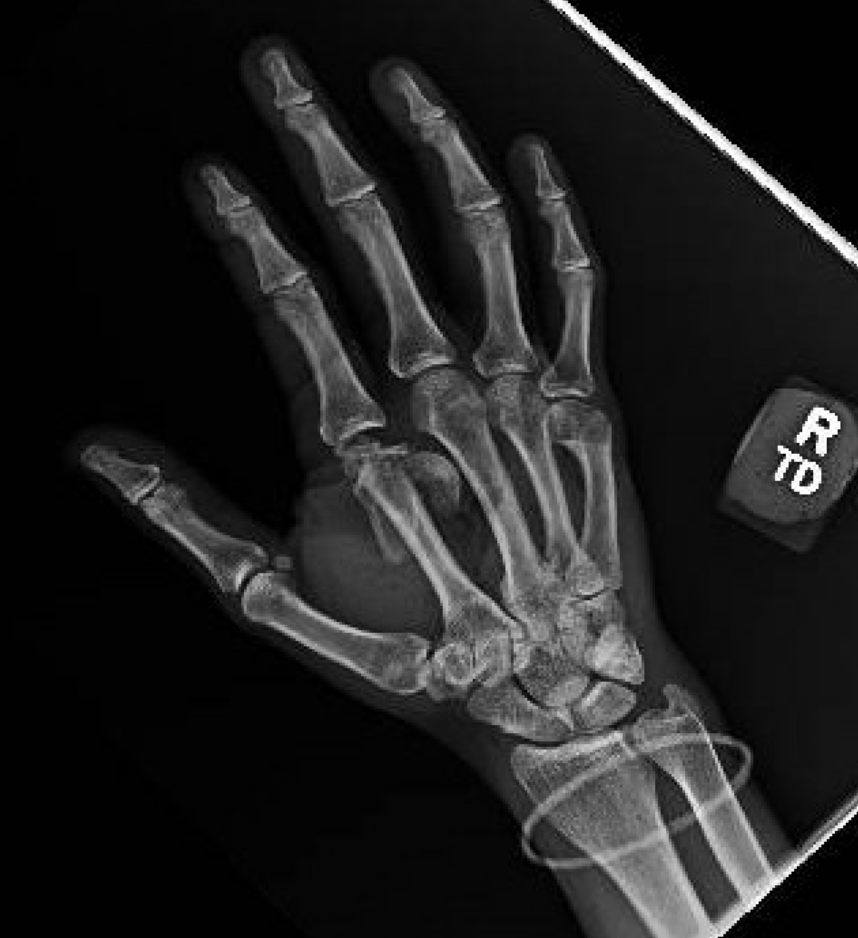×

Metacarpal Head Fracture
Head fractures are rare and you will likely not encounter these much. Fractures of the neck, shaft, and base are more commonly seen.
Head Fractures
• These are generally intraarticular. The fractures are often comminuted.
• They can be seen with dorsal MP dislocations. Therefore, if you treat an MP dislocation, look out for the metacarpal head fracture.
• If the patient has a metacarpal head fracture in association with a clenched fist injury (punching someone in the mouth), assume that the wound has oral contamination, and these must be treated with formal irrigation and debridement in the operating room.
• Radiographic evaluation includes posteroanterior, lateral, and oblique views. A Brewerton view may be performed for better visualization of the articular surface, but this should not be necessary in an ED setting.
• These are generally intraarticular. The fractures are often comminuted.
• They can be seen with dorsal MP dislocations. Therefore, if you treat an MP dislocation, look out for the metacarpal head fracture.
• If the patient has a metacarpal head fracture in association with a clenched fist injury (punching someone in the mouth), assume that the wound has oral contamination, and these must be treated with formal irrigation and debridement in the operating room.
• Radiographic evaluation includes posteroanterior, lateral, and oblique views. A Brewerton view may be performed for better visualization of the articular surface, but this should not be necessary in an ED setting.

1 of 4
38-year-old female who was attacked by a dog. She sustained this comminuted 2nd metacarpal fracture with main articular piece completely displaced and between the metacarpals.
ED Management
• These fractures will not need a reduction.
• These fractures will not need a reduction.
When to Call Hand Surgery:
• The fracture is open: the skin over the fracture is open and there is a track down to bone.
◦ Most commonly, this is due to a penetrating mechanism for metacarpal head fractures. So you will see these in knife or gun injuries.
• Otherwise, please splint to protect the fracture, then have patient follow up outpatient with a hand surgeon within 1 week.
• The fracture is open: the skin over the fracture is open and there is a track down to bone.
◦ Most commonly, this is due to a penetrating mechanism for metacarpal head fractures. So you will see these in knife or gun injuries.
• Otherwise, please splint to protect the fracture, then have patient follow up outpatient with a hand surgeon within 1 week.
Counseling the Patient:
• The treatment of metacarpal head fractures are individualized.
• Nevertheless, a majority of these will require surgery. It is imperative that the patient be seen as soon as possible in a Hand Surgery clinic.
• The treatment of metacarpal head fractures are individualized.
• Nevertheless, a majority of these will require surgery. It is imperative that the patient be seen as soon as possible in a Hand Surgery clinic.